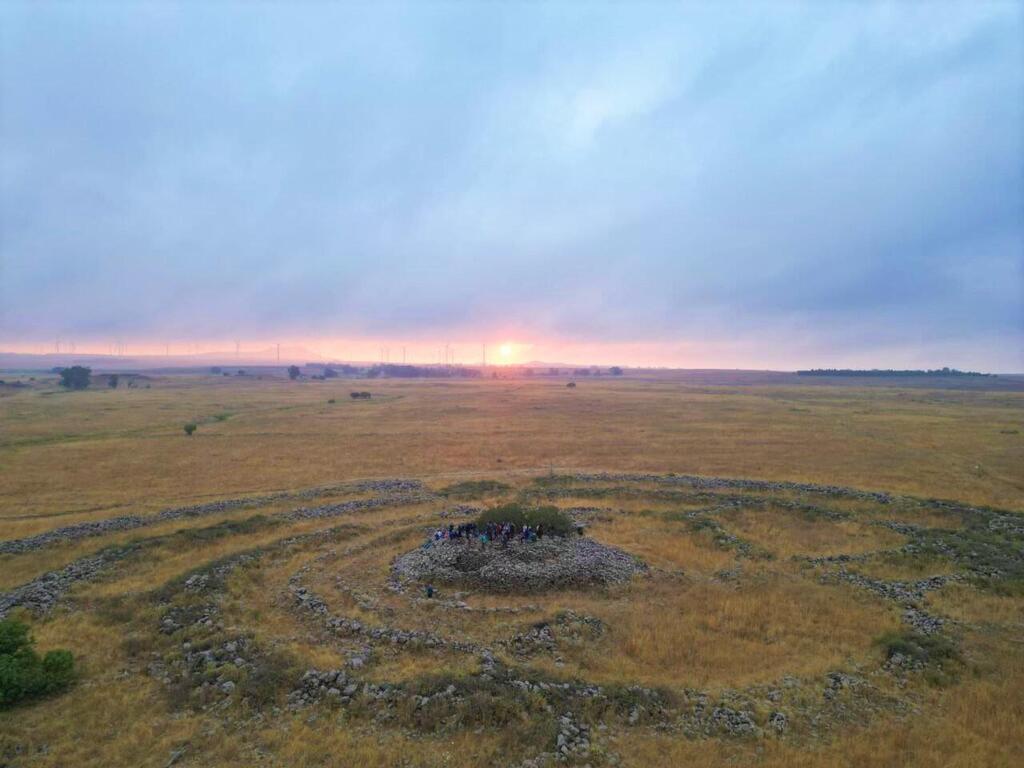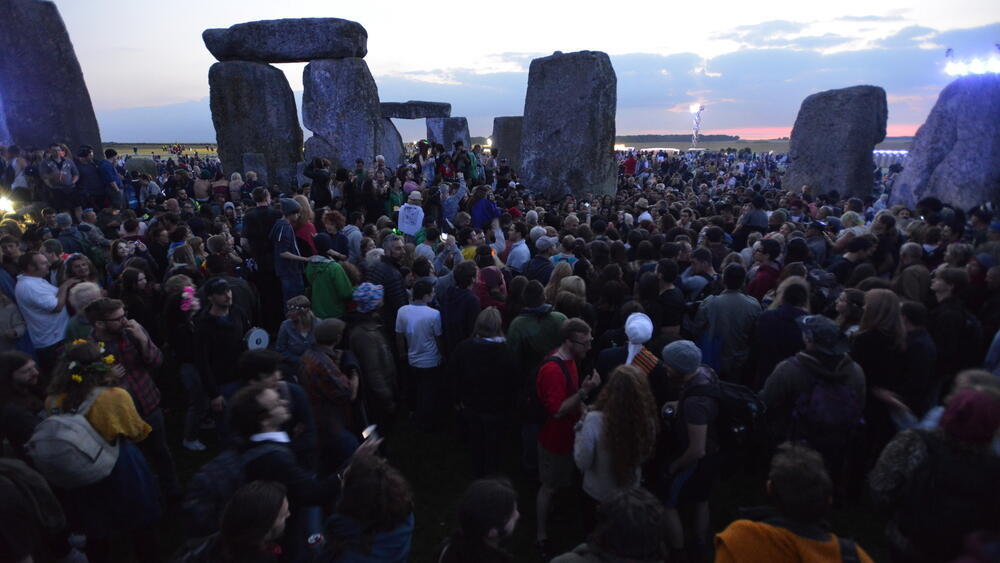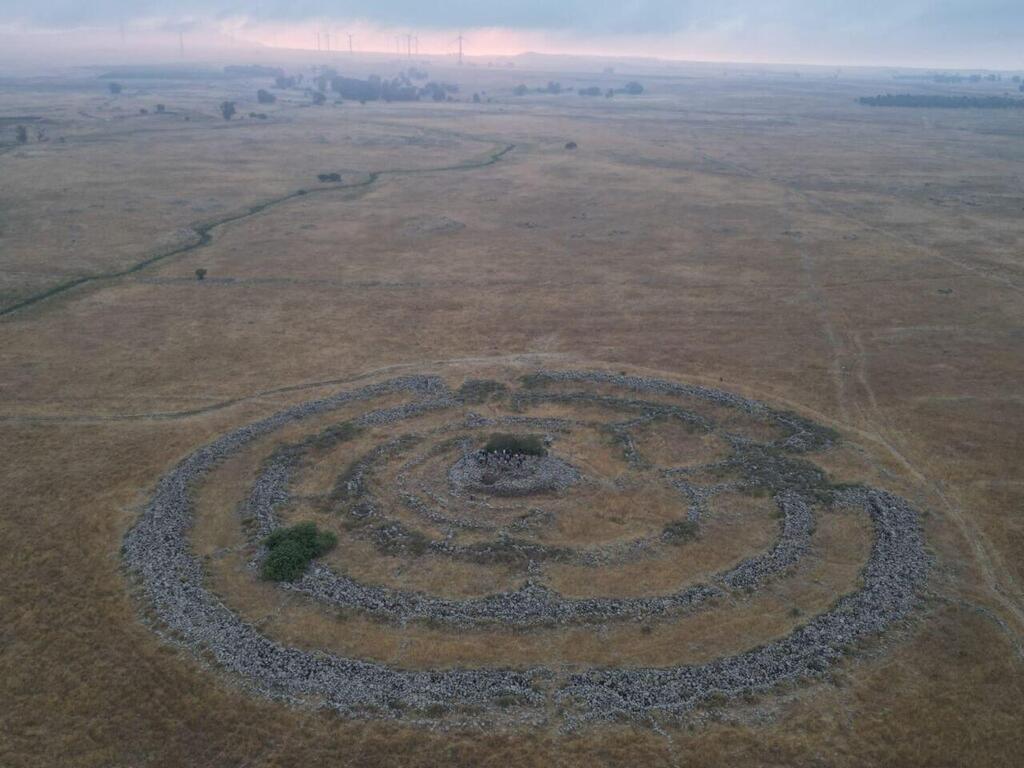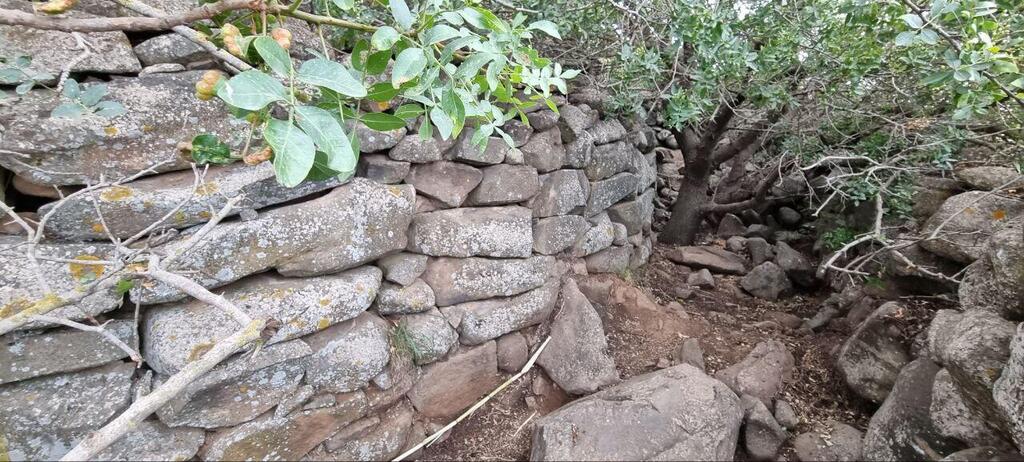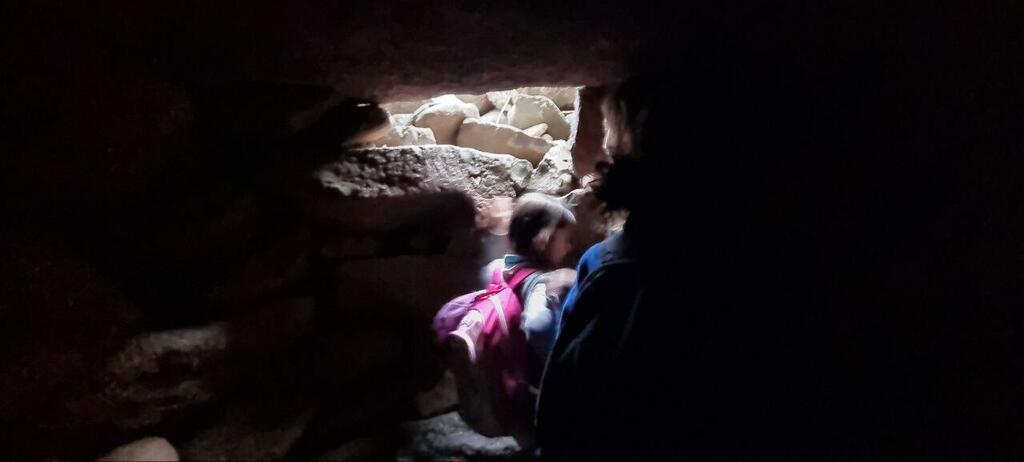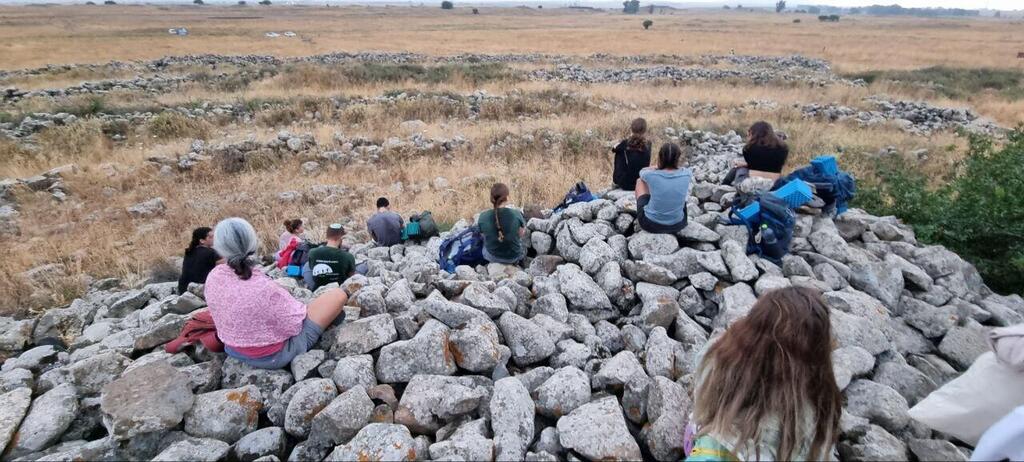Getting your Trinity Audio player ready...
Rujm el-Hiri, or Gilgal Rephaim in Hebrew, is a massive and mysterious stone circle discovered in the Golan Heights following the Six-Day War. It is an extraordinary and impressive megalithic (construction with large, unworked stones) structure of about 42,000 stones arranged in circles. The circumference of the outer circle is about half a kilometer and its diameter is around 150 meters, making it a massive and striking structure not just in terms of prehistoric humans.
More stories:
At the center of the site, lies a strange, elevated stone mound which includes a curious underground chamber and a stunning viewpoint of the area. The prevalent explanation among researchers and archaeologists is that ancient people built this exceptional structure around 5,000 years ago, and a ceremonial burial of a high-ranking individual was conducted there after a thousand years.
Things become trickier from here. There are various and diverse hypotheses regarding the reasons for the establishment of the mysterious archaeological site. Some researchers claim it is a ritual site, while others insist that it's a burial site, a tribal gathering site, an astronomical viewpoint or an ancient calendar based on the movement of the sun.
In 2016, I visited the intriguing site with Dr. Yitzhak Paz, a senior archaeologist from the Antiquities Authority. Instead of getting answers to many questions, I returned home with numerous additional questions and a gut feeling that we’d only scratched the surface, and Rujm el-Hiri turned into a riddle for me.
Unrelated to the heated debate among scientists and archaeologists who study Rujm el-Hiri and try to understand who built it and why they bothered to move dozens of tons of stones and arrange them in massive circles that can only be fully appreciated from the air, it turns out that the peak of the impressive mound, which was built at the center of the mysterious stone circle, becomes a particularly powerful and exciting cosmic, energetic, and magnetic convergence point during the sunrise of the "longest day of the year". This spot holds special significance for followers of Shamanism, Paganism and many curious individuals.
Israeli fans of the occult, healing practices and New Age consider the site to be sacred and possessing extraordinary energy. Similar to the world-renowned circular megalithic site Stonehenge in Britain where the longest day of the year is celebrated with reenactments of Druidic ceremonies, a growing young and esoteric scene in Israel acknowledges the energetic capabilities of the ancient structure in relation to the forces of nature and the seasons.
Back to 2023. On June 21, the eve of the summer solstice, which marks the planetary turning point where the night is shortest and the day is longest, I was invited to a mysterious sunrise ceremony at the Gilgal Rephaim site. The esteemed Shamanic teacher who extended the invitation has been researching the site for years, and since it involved a particularly remote expedition, we arranged to join her in a jeep, and she would guide us through the dark night to the enigmatic hill.
At 2am, a few minutes before ascending to the Golan Heights, and three and a half hours before sunrise, I realize that the Shamanic teacher with the jeep won't be arriving. I'm stuck in a luxurious private car with a student of her student, an amateur healer and her skeptical photographer friend.
It takes us a few moments to process the frustrating and discouraging situation, and I immediately make an emergency call to a friend who’s familiar with the area for reassurance.
He sends me a photo of a map, and in tiny black dots, he marks a secretive and clandestine detour to the Gilgal Rephaim that can be done with a private car, not just a jeep.
Despite it being the shortest night of the year, the slow drive through the darkness with a car is a very nerve-wracking experience. At 5am, half an hour before the sunrise of the longest day of the year, and two kilometers away from our destination, we disembark from the vehicle and prepare for a short hike on a rough trail with boulders and water crossings that require an off-road vehicle.
Suddenly, from the darkness, a group of dozens of senior travelers with sophisticated reflex cameras and trendy trekking attire from top brands emerges. They march swiftly to catch the sunrise, and the authoritative voice of their guide echoes through the darkness, urging them "not to disturb the Shamanic ceremony, ignore the smell of incense and not stare at people."
In order to make it in time to the mysterious Gilgal Rephaim with the sunrise, we accelerate our steps in the darkness. As the first rays of light rise beyond the Syrian border, the enigmatic structure of Gilgal Rephaim appears before us, centered in a wide field.
We enter through an ancient gate to the outer stone circle, which can only be recognized as a massive circle from a bird's-eye view. From an energetic standpoint, I still feel nothing but the pounding of my heart, sweat and adrenaline from the running and the eerie journey in the dark.
A massive and impressive stone gate marks the entrance to the second stone circle on the hill. To our surprise and disappointment, the site appears deserted - no ceremonies, no Shamans. At that point, the skeptical photographer has about had it and returns to the car to rest, but the healing student remains optimistic and suggests that we climb the hill with the underground chamber.
The ascent is challenging, a kind of climb over a pile of stones, and those who attempt it with sandals or flip-flops may risk getting hurt. At the peak of the hill, we encounter a small group of people gazing quietly toward the east or engaging in some gentle form of meditation.
Yaniv Raifer, a drone photographer and adventure enthusiast who spent the sleepless night with his patient and accommodating wife to capture the Shamanic ceremony at sunrise, updates us saying, "The Shamans haven't arrived, and there won't be a ceremony today. Last year, there were plenty of clouds, and they didn't see the sunrise, so there was nothing to photograph. I really hope that this year, luck will be on our side, and we will witness the sun rising above the entrance of the outer circle."
Despite being the longest day of the year, it's cold and humid, and everyone is gathered quietly, focused on the eastern horizon. Suddenly, I hear joyful cheers along with the incessant annoying buzzing of a malfunctioning drone.
His drone is malfunctioning, and the non-stop buzzing annoys the people who endured a challenging journey and restlessly waited in the dark to witness the sacred sunrise. Just before the locals attempt to lynch or sacrifice the disruptive drone to the sun gods, he retrieves it and puts it away.
Now is the time to ask all photography enthusiasts who wish to come to Gilgal Rephaim next year: please keep silent, respect the people there, do not photograph people without permission and if you want to fly a drone, do it from the side and not from atop the hill, as it really disturbs the ceremony.
Minutes before sunrise, several young hikers ascend the hill, dragging giant backpacks, and are soon joined by the professional group of travelers we encountered in the darkness, merging like a herd of gazelles and conquering the hill. One of them, a cheerful senior in great shape, expresses deep disappointment, saying, "No ceremony - nothing to photograph!"
My travel companion, the healing student, suggests that we move cautiously away from the crowd to avoid falling into one of the pits. We go southward, skirting around a peculiar tree that grew on the hill's summit, obstructing the view to the east.
And then it begins - a perfect, red sun emerges from the direction of Syria, beyond the mountains and the hills in the east. A magical and awe-inspiring moment of the beauty of creation, and simultaneously, the complaints and grumblings of many photographers about the absence of the ceremony fade away. The horizon is painted in soft, radiant light, just as the wise ancients planned when they built the enigmatic structure. The brilliant sun of the longest day of the year ascends to the sky, exactly through the distant eastern gate of the outer circle.
Finally, peace is restored to the hill, and everyone was immersed in an inner experience. Although there is no Shaman with an official certificate and cloak, and no formal healing ceremony, it is evident that everyone is going through a process. Even I stop taking pictures, focusing on the sacred sunrise, concentrating on my breath and the magnificent stone circle I am sitting in the center of.
Effortlessly, I connect with profound visions, a sense of profound authentic happiness and the realization that those unknown ancient builders who constructed Gilgal Rephaim some 5,000 years ago held secrets that we may never fully comprehend.


